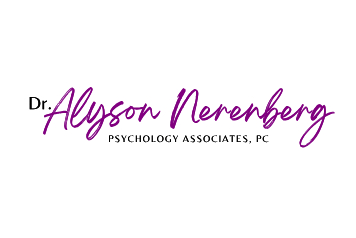After receiving training in hypnotherapy, I quickly realized that much of my work using this technique would be dispelling myths about what hypnotherapy is not. When I tell people that I am trained as a hypnotherapist, I am met with curiosity, incredulousness, and even trepidation. “Is it mind control?” people ask. “I do not want to be on all fours barking like a dog or clucking like a chicken every time I hear the sound of wind chimes”, they are quick to add. Still others respond as if the key to unlocking a great mystery has been handed to them. There is a willingness to try anything that will free them of unhealthy habits and phobias.
Each of these responses has led me down a path of providing countless explanations about what hypnotherapy is and is not. I am not convinced, however, that my attempts to define hypnotherapy in those moments have been successful. To the contrary, I have found myself grasping for the perfect summation of hypnotherapy for potential clients, loved ones, and curious strangers whose friendliness leads our small talk to the inevitable question of, “What do you do for work?”
Thankfully, having the opportunity to write this blog has provided me an opportunity to collect my thoughts on the subject of hypnotherapy. My hope is to clarify what one can expect in a hypnotherapy session and to highlight the benefits of hypnotherapy for treating many of the issues that lead people to seek the help of a mental health practitioner. Hypnotherapy can be used in conjunction with numerous other modalities and can often be sufficient for treatment in and of itself. I personally draw from various techniques to meet the needs of each client. Some areas that hypnotherapy has proven to be particularly effective are in the treatment of anxiety, depression, phobias, compulsive behaviors, addiction, pain management, self-esteem issues, and trauma. Interestingly, hypnotherapy is particularly helpful in healing the inner child after trauma. In this instance, hypnotherapy involves age regressions which can bring the client to a vivid memory in order that it might be healed. For some clients, this process can happen very quickly and for others may occur after numerous sessions. Clients who have experience with EMDR (Eye Movement Desensitization and Reprocessing Therapy), may have a comparable experience in hypnotherapy in terms of how quickly they are able to create distance from past negative experiences and behaviors.
The primary aim of hypnotherapy is to replace automatic negative thought responses and behaviors with healthier, more positive ways of thinking and being. Initial sessions are focused on gathering some background information about the current challenges a client is facing.
Once problems have been identified and goals for treatment have been established, the client will be introduced to relaxation techniques followed by a hypnotherapy session. There are several methods for inducing hypnosis. I often begin induction into hypnosis with a very relaxing guided meditation. This allows clients to gain deeper access to the subconscious mind. Clients are fully awake and conscious while in hypnosis. They have complete recollection of everything that comes up or is shared during a hypnotherapy session.
The purpose of hypnosis is simply to allow clients to approach their treatment from a deeply relaxed state. People often express that it would be impossible to hypnotize them because they may be skeptical, stubborn, or unwilling to allow the process to happen. In truth, anyone and everyone can be hypnotized. Consider the fact that most of us are hypnotized daily without even realizing it. For example, when we see a tantalizing commercial for a delicious specialty sandwich while getting ready for work only to find that later in the day find we have an nagging craving that none other than that specific sandwich can satisfy, we are experiencing the power of suggestion. This is a form of hypnosis. When we are thinking deeply while driving and miss our exit, we are in a hypnotic state. We are fully conscious and fully awake, yet accessing deeper thinking at the same time. Clients who present with severe anxiety, PTSD or any kind of phobia may find that they are in a constant state of hypervigilance. This in and of itself can be a obstacle in therapy and can lead the process of healing and change to take longer. By bringing such clients into a more relaxed state, their subconscious mind is more open to the power of suggestion and, therefore, can begin to heal more quickly after fewer sessions. The benefits of hypnotherapy for treating addictions and compulsions have been proven to decrease or cease the unwanted behaviors in a short amount of time.
The subconscious mind is undeniably powerful. This is where we store our memories as well as deeply rooted beliefs about ourselves and the world around us. Many of these beliefs developed when we were too young to discern or challenge the validity of disempowering thoughts. Early experiences in school and within our own families can lay the foundation for the way we live and make choices as adults. Much of this we are simply unaware of until we reach a place of recognizing that something is no longer serving us well. It is often in an attempt to understand our own negative beliefs and behaviors that we seek the help of a therapist. Traditional talk therapy is proven to be effective in treating all of the issues previously mentioned. Hypnotherapy is like taking the direct route to healing instead of winding through the back roads. The paths are heading to the same place and get there eventually, but hypnotherapy provides a fast track to healing and change.
Still skeptical? Schedule a session and come experience hypnotherapy for yourself. I promise you will not leave the office clucking like a chicken at the sound of wind chimes. You may just leave with a deeper understanding of what has been motivating you and a newfound desire to change old habits for the better.

